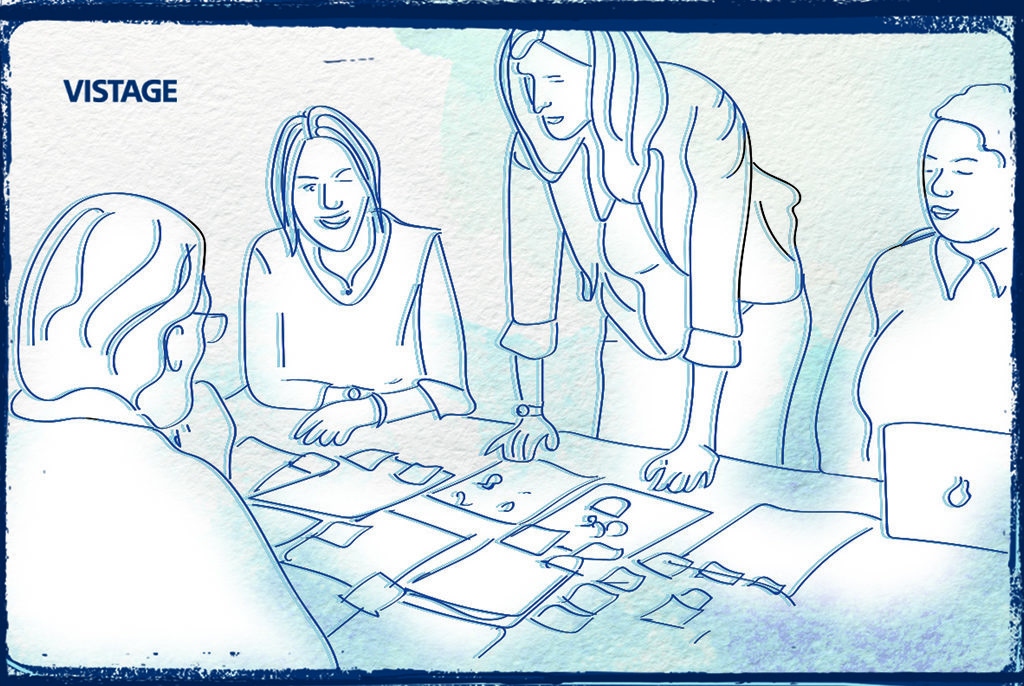How to Inspire Collaboration That Creates Real ROI

Seventy people volunteered to work for free for 6 months to help me launch my company. Here’s why, and how we keep that enthusiasm alive in our culture 17 years later.
My passion for creating powerful collaborative relationships started with what I learned from watching my father.
My family had a large printing and publishing company in New York City where my father was the head of sales and engineering, a very unusual combination. He always had the view that the best success comes from good collaborative relationships. In his 50s, he broke away from the family business to start a new printing company. As head of engineering for years, he had developed and patented many new designs for printing presses and bindery machines. When he stared his new company, the two companies who manufactured those machines for our business were excited to be able to work with him on the new venture.
But then the startup capital he was counting on didn’t come through. He reached out to the companies, one in England, the other in Germany, and let them know the new business wasn’t happening. They both responded quickly, with a similar message: “We’ve had a collaborative relationship with you for many years. We believe in what you’re doing, and trust you to make it a success. We’ll advance you the equipment you need and when you’re up and running, you can pay us back.”
Their contribution was the equivalent of tens of millions of dollars of investment in today’s terms, and it enabled my father to start a thriving new concern at an age when many others plot their retirement. As they say, it’s not work when you love it.
 Fast-forward to my own career. In the early ‘90s at Apple, I was chosen to head up the company’s first online services division. Together our team grew Apples’ worldwide online community (or social network in today’s terms), helped give birth to Salon, and created eWorld, a clean, well-lit online community space whose strong user culture was stewarded by a team of moderators. It was a critical success but for a variety of reasons didn’t make it in the numbers game. In late 1995, Apple told me in confidence that eWorld would be shut down.
Fast-forward to my own career. In the early ‘90s at Apple, I was chosen to head up the company’s first online services division. Together our team grew Apples’ worldwide online community (or social network in today’s terms), helped give birth to Salon, and created eWorld, a clean, well-lit online community space whose strong user culture was stewarded by a team of moderators. It was a critical success but for a variety of reasons didn’t make it in the numbers game. In late 1995, Apple told me in confidence that eWorld would be shut down.
For a year I had been thinking about starting my own online services company, but I had been nervous to make the leap. Here was the push I needed. As the clock ticked on eWorld, I put together a fairly conservative 12-page business plan that had me fundraising until June, and then finishing a prototype in December.
In February the news about eWorld went public. The moderators who made it such a terrific environment got news they would soon be let go. As word got round that my co-founder Jenna Woodul and I were starting a new company, as-yet-unfunded, we started getting emails: “We want to make what you’re doing successful. We believe in you and we’ll work for you for 6 months for free to help you get launched if it will keep this community going and create jobs down the line.”
I threw out the business plan and we launched not much more than a month later, with a committed volunteer staff of 70 moderators and help from multiple other partners Jenna and I had relationships with. We had not even met half the moderators in person, but we were bound together by this idea that online spaces empowered individuals to connect, form relationships, and create value together that they could not create by themselves.
We called the service TalkCity and the company LiveWorld, where I am still chairman and CEO today. Like my father, I founded a company not thanks to piles of cash, but instead thanks to the trust and value of collaborative relationships.
The company has changed significantly over the years. Today we provide engagement, moderation, and insight services and tools on the greater social web. But we’re still in the business of building transformative online dialogue and relationships, and committed to the belief that people can create more value together than they could alone.
One of the principles I learned while working with Steve Jobs was, as he put it, “to find people on the edge of greatness and push them over the edge”. With online community, social media, and LiveWorld, we’ve extended this concept. We find groups of people on the edge of greatness and push them over that edge, together. We do that internally, and we do that for customers.
Shared pride in our product and our mission take us a long way toward that edge. But we also explicitly promote our culture, which we call Collaborative Velocity. We first developed it while at Apple, with the help of a consultancy called the Leadership Edge, and have since developed it.
These are the core principles that we believe create the kind of workplace that people show up to because it’s a meaningful collaborative community, not just a desk and a paycheck. They enable us to work as a team while making decisions that keep the business moving forward. They are:
1. Contribution, not opinion: Everyone brings talent and perspective to the team. Everyone can make a contribution and across functions. Focus on high-velocity contribution without bureaucracy. Don’t debate opinions just for the sake of debate.
2. Leadership accountability, not organizational authority: Entrust leadership of projects and programs to people with the most appropriate skill set, not necessarily due to organizational structure or authority.
3. Alignment, not agreement: Having full agreement on what to do is secondary to quick and efficient decision-making that keeps the ball moving. Look for alignment on the direction the ball moves, not agreement on every detail, and don’t challenge decisions through back-channel or political maneuvering.
4. Trust, and giving each other the benefit of the doubt: Expect employees to give others the benefit of the doubt, trusting that individuals are well intentioned and doing the best for your company and clients. Such trust is also based on shared agreement that communications with one another are to be open, honest, and candid.
I’m interested in hearing what values you believe best serve collaboration, and whether you’ve communicated them to your team. If not, I strongly recommend it.
Category: Communication & Alignment Leadership
Tags:

